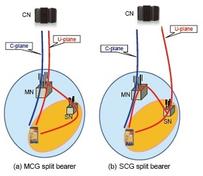Understanding C-V2X Technology: LTE and 5G Modules
Advertisement
C-V2X (Cellular Vehicle-to-Everything) is a communication technology that allows vehicles to communicate with each other (V2V), with roadside infrastructure (V2I), with pedestrians (V2P), and with the network (V2N). It’s designed to enhance road safety, improve traffic efficiency, and support various automotive applications. C-V2X can operate in both LTE (Long-Term Evolution) and 5G cellular networks and is often referred to as LTE-V2X and 5G-V2X, respectively.

The figure depicts different transmission modes of C-V2X.
Let’s understand C-V2X modules for LTE and 5G cellular technologies. Let’s explore C-V2X Cellular Modules for LTE and 5G NR, including their features, capabilities, and use cases.
The popular manufacturers or vendors of C-V2X modules and C-V2X test and measurement equipment or solutions include Qualcomm, Huawei, NXP Semiconductors, Quectel, Autotalks, Commsignia, Savari, and Rohde & Schwarz.
C-V2X Modules for LTE
LTE-V2X operates within the LTE cellular network infrastructure. It utilizes the LTE network to enable direct communication between vehicles and infrastructure. LTE-V2X supports both infrastructure-based communication (V2I) and direct communication between vehicles (V2V).
Features and Capabilities
LTE-V2X modules for vehicles typically include a cellular modem and additional communication components. These modules allow vehicles to exchange safety-related information, such as position, speed, and status, with each other and with roadside infrastructure. LTE-V2X provides low-latency communication, making it suitable for safety-critical applications.
Use Cases
- Emergency Brake Light: Vehicles can broadcast emergency braking information to nearby vehicles to alert them of a sudden stop.
- Intersection Collision Warning: Vehicles approaching an intersection can share their positions and intentions to avoid collisions.
- Cooperative Adaptive Cruise Control: Vehicles can cooperate to optimize traffic flow and improve fuel efficiency.
C-V2X Modules for 5G
5G-V2X operates within the 5G cellular network, which introduces higher data rates, lower latency, and increased capacity compared to LTE. It leverages the enhanced capabilities of 5G to support a broader range of applications and services.
Features and Capabilities
5G-V2X modules build upon the capabilities of LTE-V2X with additional enhancements. They take advantage of 5G’s ultra-reliable low-latency communication (URLLC) features, making it even more suitable for safety-critical applications. 5G-V2X enables advanced use cases, such as augmented reality for navigation and communication with pedestrians.
Use Cases
- Traffic Efficiency and Management: 5G-V2X can support advanced traffic management systems and enable more efficient routing and coordination.
- Extended Range and Coverage: The enhanced coverage and lower latency of 5G enable communication over longer distances and in challenging environments.
Key Considerations Before Selecting C-V2X Modules
Following are the key considerations before selecting C-V2X modules for your needs.
- Backward Compatibility: C-V2X modules are often designed to be backward compatible with LTE, ensuring a smooth transition as cellular networks evolve.
- Regulatory Environment: Deployment and usage of C-V2X technologies may depend on regulatory approvals and standards adopted by different regions.
- Ecosystem Collaboration: The successful deployment of C-V2X relies on collaboration between automotive manufacturers, infrastructure providers, and cellular network operators.
C-V2X modules play a crucial role in advancing intelligent transportation systems, promoting road safety, and enabling innovative applications that leverage cellular networks. The technology continues to evolve with ongoing developments in both LTE and 5G cellular technologies.
Advertisement
 RF
RF


